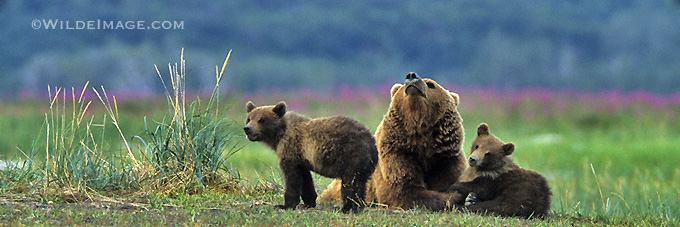 At the first sign of spring, Buck Wilde , otherwise known as, ‘The Bear Whisperer’, feels a stir inside that beckons him back to the famous Grizzly Bear Maze in Katmai National Park, Alaska. Buck is one of the most prominent grizzly bear behaviorists and nature photographers in the world today.
At the first sign of spring, Buck Wilde , otherwise known as, ‘The Bear Whisperer’, feels a stir inside that beckons him back to the famous Grizzly Bear Maze in Katmai National Park, Alaska. Buck is one of the most prominent grizzly bear behaviorists and nature photographers in the world today.
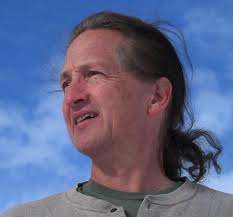 This summer and fall, wildlife artists, nature enthusiasts and photographers are invited to join Buck on intimate world-class, wilderness safaris and photography workshops to meet grizzly bears, caribou, walruses, musk oxen, humpback whales on kayaks, and more.
This summer and fall, wildlife artists, nature enthusiasts and photographers are invited to join Buck on intimate world-class, wilderness safaris and photography workshops to meet grizzly bears, caribou, walruses, musk oxen, humpback whales on kayaks, and more.
Buck has been safely leading filmmakers into the wilderness to photograph amazing wildlife behaviors since 1994, including TV documentaries produced by the BBC with David Attenborough, The National Geographic, Discovery, and PBS. He has authored over 15 books and his expert insights have allowed him to ‘cross over into the animal kingdom’ with an ease that earned him the nickname, “The Bear Whisperer,” as given to him by David Attenborough during the 2001 filming of a BBC television documentary.
Last month, I had the rare opportunity to sit down with Buck to ask him about his grizzly bear and photography adventures. Buck generously shared his interesting wildlife stories, nature viewing and photography tips with me. I hope my wildlife artist, photographer and nature enthusiast friends enjoy this very interesting and informative interview…
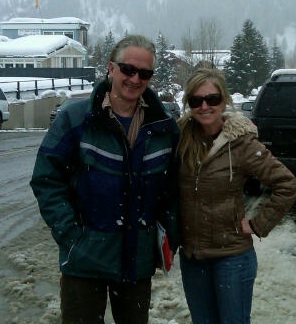
Lori: “Buck, how did you become interested in wildlife and photography?”
Buck: “I grew up in Appalachia with a natural curiosity for animals and their behaviors. As a boy I use to hunt, but I enjoyed playing with frogs and turtles, talking to wild turkeys and walking through the forests with deer. It was a natural progression to give up the gun for a camera. A career in intelligence gathering further honed skills to observe critical details in behavior and anticipate my subject’s next move.”
Lori: “David Attenborough coined you, ‘The Grizzly Bear Whisperer’ and it is said that you are also able to ‘read wild minds’. What does that mean?”
Buck: “I am a naturalist first, and a photographer second. Reading wild minds is essential when filming ‘intimate grizzly encounters’ for TV documentaries with David Attenborough (BBC) or other celebrities from National Geographic or PBS on camera. My view of grizzly bears is unique. I am aware of how an animal’s ‘learned fear’ can influence how a bear encounter will unfold.”
“It is my goal to gain the animal’s confidence, trust and curiosity within its world, whether it is bears, horses, whales or walruses. In the lower 48 states, hunted animals have an extra layer of concern and wariness for humans which make relationship building and photography more challenging. In Alaska, the animals are not as fearful and wary of humans. This makes it easier to build a relationship with the Alaskan grizzly bears. Anyone can do it.”
“If you talk to the animals, they will talk with you
and you will know each other.
If you do not talk to them, you will not know them
and what you do not know, you will fear.
What one fears, one destroys.”
~Chief Dan George
Lori: “How are you able to get those ‘up-close and personal’ photographs of the grizzly bears?” 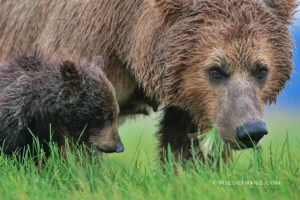
Buck: “I have a healthy respect for nature. Unlike hunting, where the hunter secretively stalks his prey, I place myself out in the open and provoke curiosity. I must motivate a direct connection in order to have a connection with the animal. It is a mistake to stalk, sneak up or hide behind a blind. This does not build trust with animals.”
“I understand how ecosystems work. As a naturalist, I know how to place myself in the right place at the right time. The ‘edges’ of things are best. I mean where ecosystems come together like ‘edges’ of forests and meadows. The ‘edges’ of night and day. This is where you will find wildlife.”
“To get good photographs of the bears, I must understand their feeding habits and sleeping habits. Next, I must make myself noticeably visible to them. I find a spot which will allow me to position myself where I think I will have the best opportunity for a close grizzly bear encounter.”
“After I find the perfect spot, I will sit and not move. This takes a lot of patience. I bring my camera gear, snacks, an iPod or a book and wait. A lot of photographers will try to move in to get a closer picture and that is something that does not work with large bears and could put you in danger.”
Lori: “How close do you get to the bears and have you ever felt in danger?”
Buck: “Like I said, I don’t get close to the bears…the bears get close to me. Each year, I have an average of 500 close encounters with grizzly bears. Close can be anywhere between 50 feet and a few feet away. At times, I am literally face to face with these bears. Grizzlies have poor vision and learn to recognize me through olfactory fingerprinting or smell. There have been times when the mother bears will come right up and sniff me in the face.”
“The biggest learning curve happened to me in my first 5 years in Alaska. I had some of my closest and scariest encounters back then with at least 15 bluff charges. One time, a grizzly bear charged at me then stopped, towered over me and roared in my face…that left me a little shaken and humbled. Now, that I know how to live with the bears, I haven’t had any dangerous encounters since.”
Lori: “Wow! What did you do, and do you now carry any protection?”
Buck: “Whenever a grizzly bear acts a bit aggressive, I stand my ground and speak to it firmly like you would a dog. This usually works. I never drop to the ground and curl up in a ball. When that bear towered over me, I stood my ground but, I acquiesced and lowered my head with no eye contact. The bear turned a walked away.”
“When I am alone, I do not carry any protection. However, when I am leading safaris with clients, I carry protective measures, but have never had to use them.”
If Timothy had spent more time petting the foxes instead of the bears, he might still be alive.
Lori: The late grizzly bear fanatic, Timothy Treadwell and you were in the Grizzly Maze during the same years. Were you friends and how did your philosophies differ?
Buck: “I don’t really like to talk about Timothy because it is still a very emotional subject for me. But, I will say this. Yes, I ran into Timothy on a yearly basis and our paths crossed many times in the field. We both spent our time on Kodiak Island and in the Katmai National Park. Timothy named that area, The Grizzly Maze.” 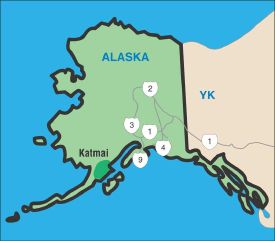
“Timothy and I were not exactly friends, although we were cordial. Timothy looked at me as competition. Our approach toward the bears was very different. He was reckless and lacked good judgement with the bears. Timothy looked to the bears as a vehicle to stardom. He would pet the bears and truly believed he was the only person who could commune with the wild bears. On the other hand, I believe that grizzly bears are misunderstood and anyone who has developed a true understanding can build a positive relationship with the bears. My motivation is to educate people about the bears. Timothy wanted to keep the bears to himself.”
Lori: “How do the Alaskan brown grizzly bears differ from the grizzly bears in the lower 48 states?”
Buck: “There are 3 major differences between the Alaskan brown grizzly bear and the smaller grizzly bear. First of all, these bears are from genetically different ‘clades’ of brown bears and the Alaskan brown bear is much larger. Two, Alaskan brown bears are happier bears because they have rich food sources and large, wild habitats. This makes the Alaskan bears less aggressive. Thirdly, most of the grizzly bears from the lower 48 states have been trapped and drugged while being ‘managed’ by Fish and Game or other agencies. These bears suffer from Post Traumatic Stress Disorder, just like humans. These traumatized bears do not forget the negative experiences which cause them to become very dangerous toward humans, even many years later.”
Lori: “What can a wilderness safari participate expect to learn from your nature adventures?”
Buck: “Our wildlife safaris are fully customized to meet our client’s wants and needs not only in Alaska, but also Idaho, Wyoming and other states. We offer a variety of wildlife packages including grizzly bears, moose, wild mustangs, eagles, walruses, whales, mountain goats and even wildflowers.”
“I teach my clients how to understand the behavior of their desired wild animal, where to look and how to find them. I put people together and face-to-face with wild animals for a wild, free roaming, experiential experience. Alaska has so many reliable viewing opportunities. Our small groups of 4-6 people do not disturb the wild animals’ true behavior in order to travel safely through bear country.”
“Clients learn how to take control of their camera equipment, they learn how to photograph wildlife, after-which I teach them how to prepare their images for presentations. These trips are especially great for artists who want to photograph and observe wild animals in their native environment. Wild animals make for better and more believable paintings. The life force and energy from nature comes through the artist to his audience. Animals in a zoo or game farm are like a person in prison.”
Lori: “Do you have any digital wildlife photography tips you can share?”
Buck: “Be cautious when photographing wildlife, especially grizzly bears and other large predators. Work with an expert until you’ve learned to communicate effectively. Don’t approach! Don’t run! Allow them to approach you!!”
Buck’s Recommended equipment and software:
- Digital SLR body, 18-22 megapixels, HD video
- Sturdy tripod with ball head or wimberly head
- Telephoto zoom lens (70-200mm, f/4, 4-stop IS)
- Super telephoto (400, 500, 0r 600mm, f/4 with IS)
- MacBook Air with energy- efficient solid state drive
- Brunton solar charger on wilderness photo expeditions
- Adobe CS, Aperture, BracketMerge, FotoMagico, Neatimage
*****
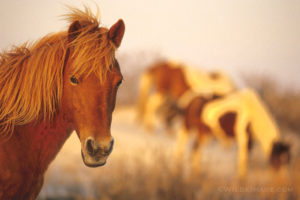
*Buck, thank you for sharing your wildlife viewing and photography tips with my readers and me! It was a pleasure learning about your interesting story. I am looking forward to next spring when I can join in on your Wyoming wilderness safari to photograph the wild horses! ~Lori
For more information, please contact Buck Wilde at (208) 440-7785, or email buck@wildeimage.com. Be sure and visit Buck’s website at www.WildeImage.com .
If you enjoyed this article, you might like these:
Yellowstone Grizzly Bear Family: Too Close for Comfort!
Winter Outdoor Painting Tips for the Plein Air Painter
The Art of Abstracting the Landscape with a Lens
Top 10 Reference Photo Tips for Artists
Pack for Painting: Tips for the Painter by Airplane or Car
A Brush With Danger: Plein Air Painting in the Back-Country
Survival Tips for the Outdoor Painter & Enthusiast
Wanderings in the Australian Bush with Wildlife Artist Matteo Grilli
I hope you join me on Facebook where artists are having fun sharing and discussing our art and Twitter! ~Lori
Some of you might like this North Light Book:
Painting Realistic Wildlife in Acrylic
30 Step-By-Step Demonstrations
Master artist William Silvers, shares his secrets for capturing the drama, the atmosphere and the very essence of wildlife so you can also create emotion-filled wildlife paintings. Filled with demonstrations that feature a stunning range of animals including golden eagles, swans, wolves, foxes, giraffes, deer, elk, black bears, polar bears, alligators and various big cats. Full of rich colors, a gripping sense of life and masterful advice, this book will help all artists achieve new levels of success and expression in their wildlife paintings.

Retail: $26.99
Your price: $17.81


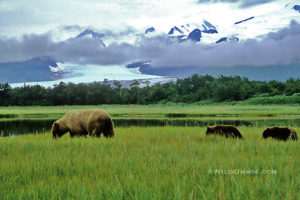

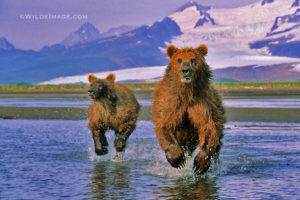






Lovely article Lori. Will your painting be going in the direction of horses next year? I’m sure they would be beautiful. Thanks for sharing.
Hello Mickey,
Wasn’t that an interesting article? I am glad you liked it. Personally, I’d love to escape into Alaska on one of Buck’s great adventures, but I am going to start closer to home with the Wyoming trip. I love those wild horses and would love to try painting them!
Thanks for the comment and the visit. I like your avatar!
Lori 🙂
Great interview with Buck! I have always loved bears and it is so good to hear about someone who can work so closely with them and respects them as equals.
Thanks, Lori.
Interesting story. Having hunted Alaska’s Brown bear and having taken photos of Polar bear and Brown bear, the two bears are distinctly different.
Brown bear tend to be shy and once they overcome their shyness, they are unpredictable. The Polar bear are curious and dangerous.
Hello Tom,
Thanks for the visit and the comment. I have never been around a Polar Bear, but have read about them. From what I can gather, they are nothing to mess with. As with any wild animal that get desensitized with humans, those ‘friendly’ Brown Bears are still wild and unpredictable as you stated. Buck does not attempt to befriend the wild bears. He only wants to be accepted into their world. Timothy made the mistake of befriending the bears and we all know how that turned out…
Thanks again-
Lori